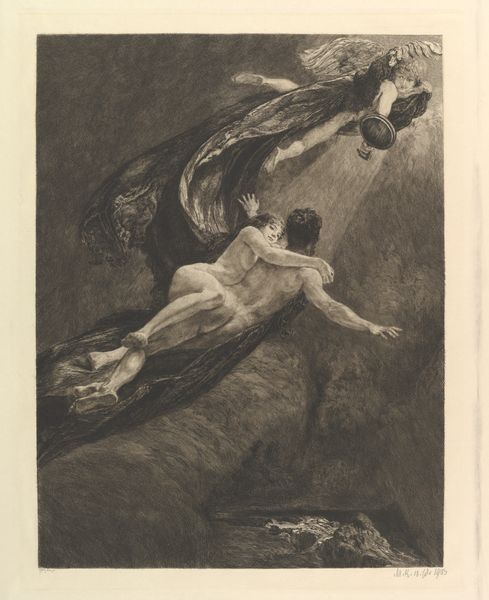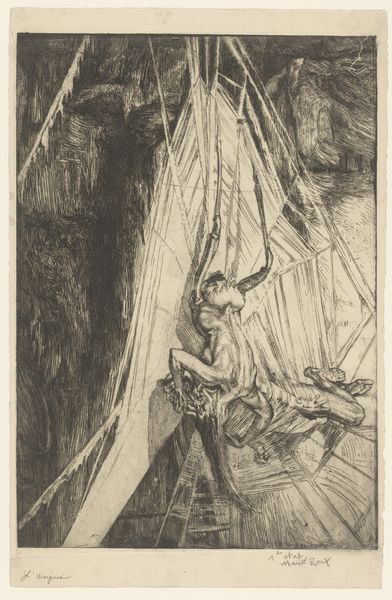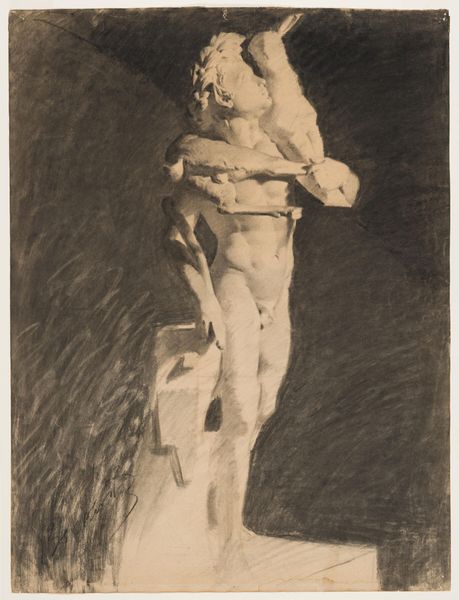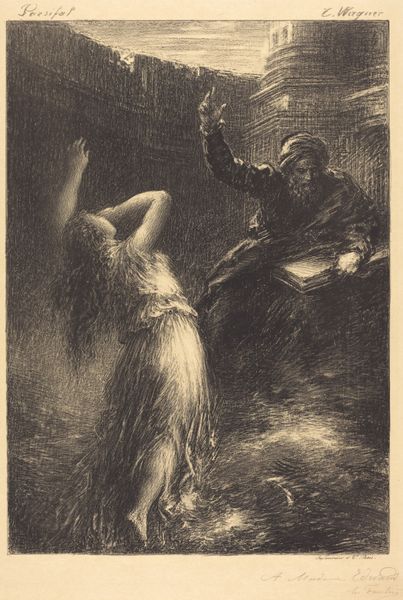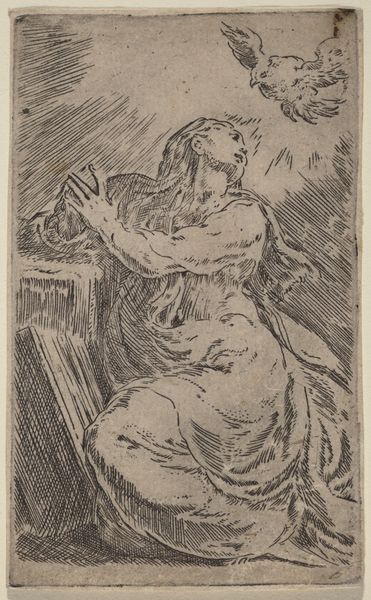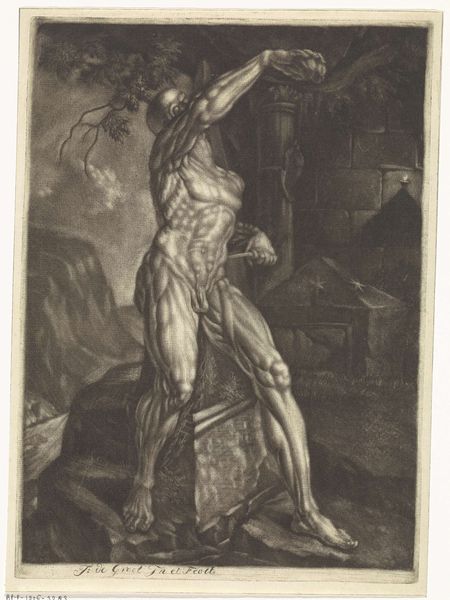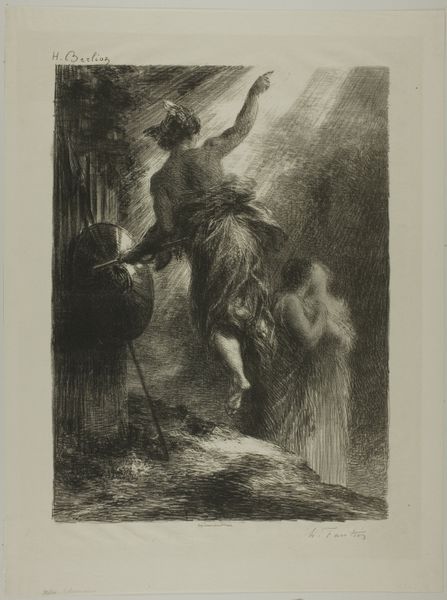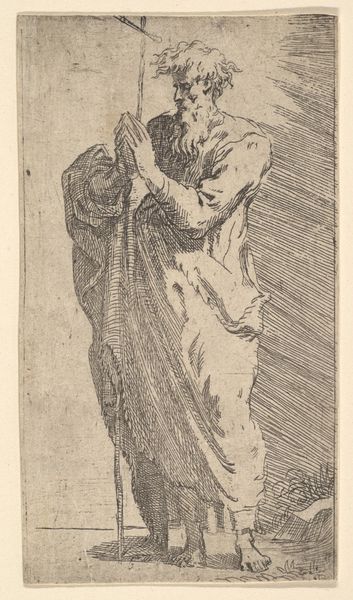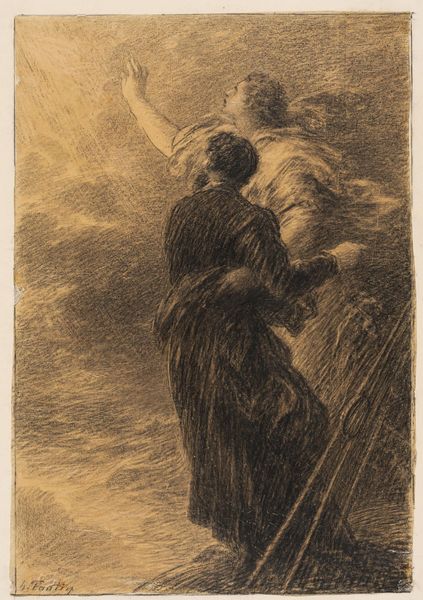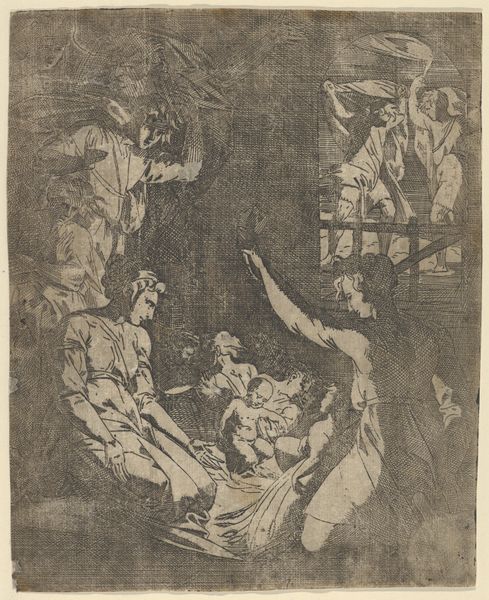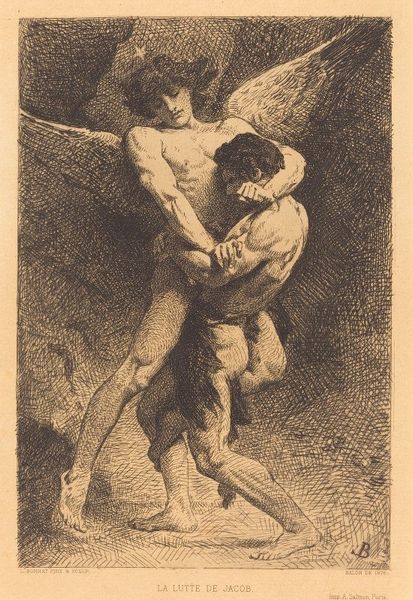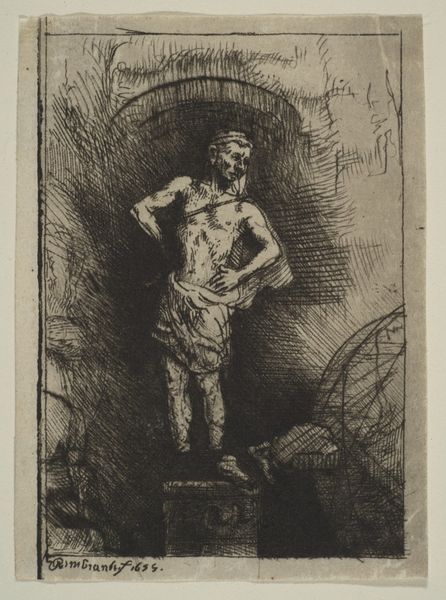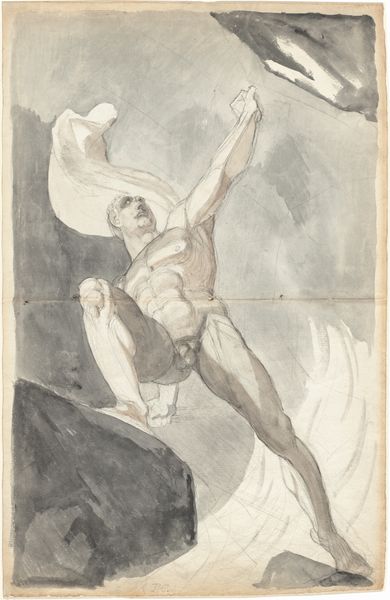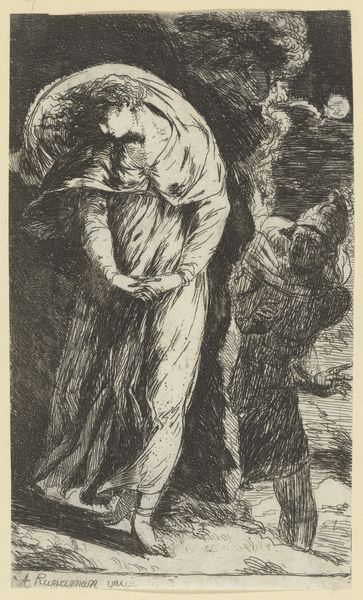
Dimensions: 272 × 164 mm (image); 295 × 205 mm (plate); 285 × 200 mm (primary support); 628 × 458 mm (secondary support)
Copyright: Public Domain
Curator: The moment I saw this piece by Max Klinger from 1884, I felt a peculiar stillness, almost as if time itself was holding its breath. What’s your impression? Editor: Agitated, actually. It has that familiar, oppressive weight of the cross…or, should I say, the wood. It screams labor, the brutal physical effort of carrying that beam before it ever took on symbolic weight. You can almost feel the rough-hewn texture. Curator: I see what you mean. Klinger made this as plate fourteen from "A Life", now residing in the Art Institute of Chicago. He employed etching on paper, a delicate medium to depict such raw anguish, don't you think? It speaks to a struggle between form and content. Editor: Absolutely, the process itself interests me: the biting of the acid into the metal, then the transfer to paper… each stage a form of pressure, replicating the depicted suffering. It brings the means of representation very much to the foreground. It really underlines the means by which we consume tragedy as spectacle. Curator: And yet, Klinger seems less concerned with spectacle and more with…psychological depth, wouldn’t you agree? The smaller figures in the foreground cling to each other for solace as the colossal figure on the cross dominates, a sort of emotional vise. It speaks of isolation, and a very modern angst. Editor: Hmm, modern, perhaps, but hardly divorced from the context of its creation. Klinger and his Symbolist contemporaries were deeply engaged with societal anxieties stemming from rapid industrialization. "Suffer!" reminds me of how religion can be exploited and turned into a tool of control... quite literally in the placement of the figure in a subordinate position. It highlights not only the represented grief, but the machinery *behind* the grief, behind the belief itself. Curator: So, for you, the genius resides in exposing the levers and gears of how meaning is constructed, where belief gets forged… That tension makes it more than just a historical artifact; it holds a disturbing mirror to our own world, doesn't it? Editor: Exactly. Looking at it, I question how easily meaning is manipulated, then consumed. Perhaps a call for vigilance, against accepting things wholesale. Curator: Perhaps. And for me, I can't shake off its powerful distillation of private grief turned into something universal…an experience etched into our souls.
Comments
No comments
Be the first to comment and join the conversation on the ultimate creative platform.
